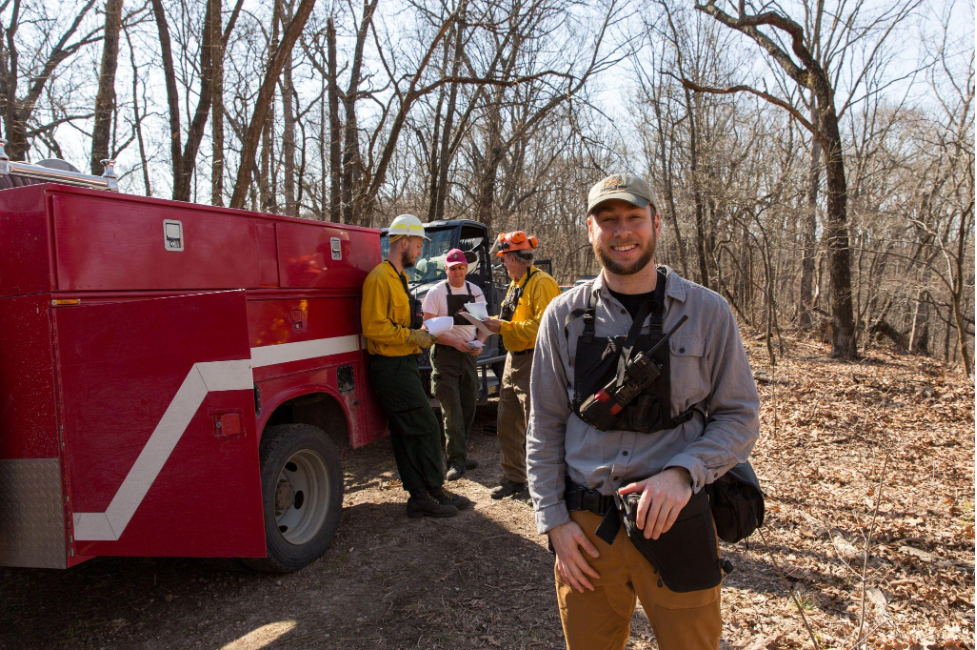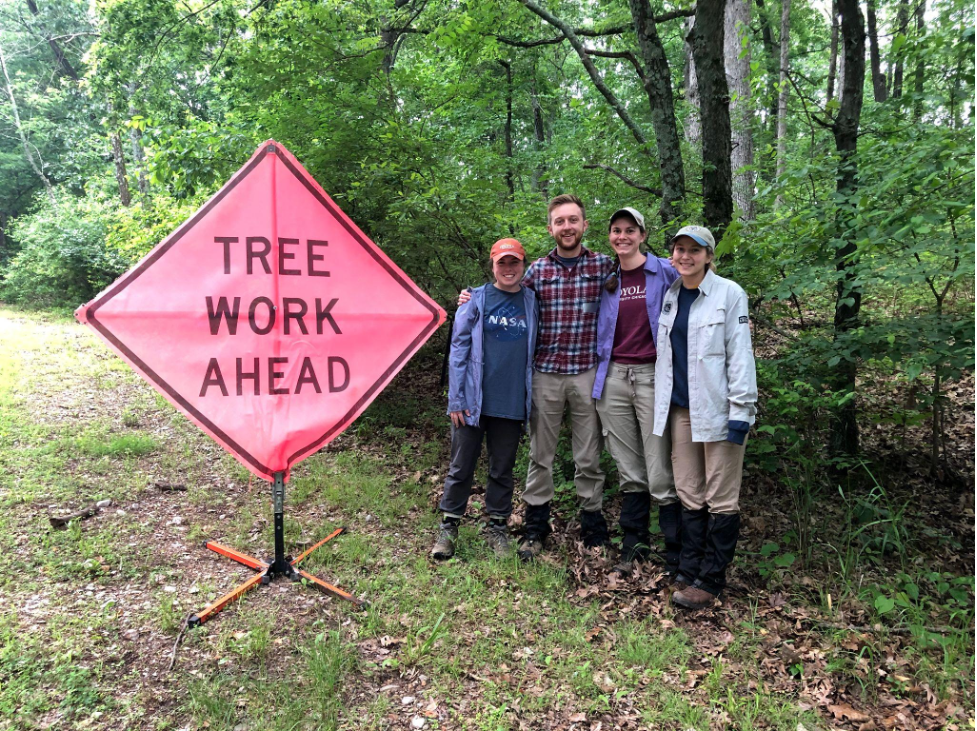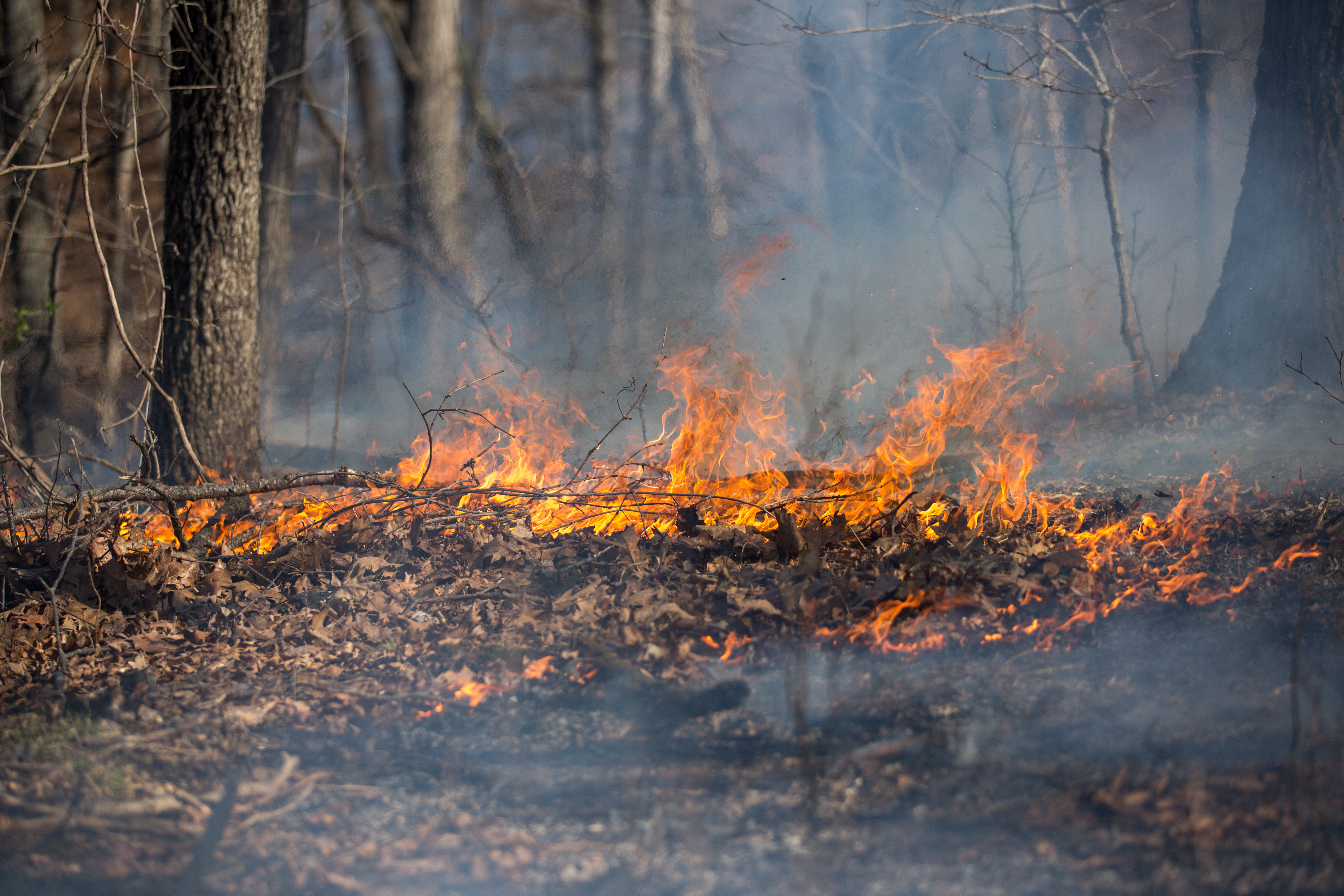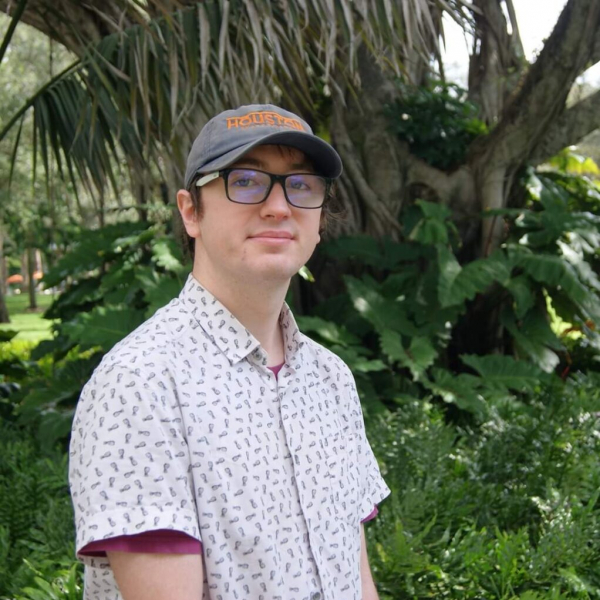By conducting controlled burns at Tyson Research Center, researchers with the Species-Pool, Fire, and Diversity project seek to understand the impact of fire on the surrounding landscape.

If today you were to peer beneath the mottled canopy of a certain 2.5-hectare (6-acre) section of Tyson Research Center’s vast expanse of oak-hickory forest, you would see exactly what one expects to see on a forest floor: a fairly innocuous mat of fallen brown leaves carpeted in a spotty understory of various green herbs and seedlings. However, if you had stepped into the same section this past April, you might have seen a thin line of orange flame advancing methodically across the forest floor, sparing little greenery in its path aside from the trees.
The event was no natural disaster — in fact, it was neither natural nor a disaster. This fire was part of a second round of controlled burns which were deliberately planned by the research center in an effort to better understand the impact of fire on the surrounding landscape. This effort consists of multiple ongoing experiments, one of which is the Species-Pool, Fire, and Diversity (SPFD) project. This experiment, which focuses primarily on plant diversity’s relationship with fire, is conducted by the research center’s forest biodiversity research team, led by Jonathan Myers, associate professor of biology in Arts & Sciences at Washington University.
To investigate the impact that disturbances such as fire have on the region’s biodiversity, Myers and colleagues compare levels of resilience, growth, and regrowth in burned and unburned sections of forest. In addition to the effects of fire, the team examines factors such as herbivory, habitat, and variation in plant traits such as leaf shape or seed size. Understanding the effect of each of these factors on the dynamics of the forest can help paint a more complete picture of the region’s ecology, which scientists and land managers alike can use to help people and communities become better stewards of the natural areas around them.
To untangle all these interrelated variables, the researchers divide the forest into small sections and give each site, plot, or subplot a different treatment — such as burned versus unburned, or inside versus outside an animal exclosure. Then, in a process known as a census, they examine tree seedling growth, survival, and recruitment in the face of these factors. This summer marked the team’s first census since the April burns, and their eighth since the project began in 2016. They conduct this research in 14 different forest sites, six of which include 15 different plots for seed and seedling experiments. Each of these plots is further divided into multiple 1-by-1 meter subplots, for a total of 450 subplots.

As one would expect, having so many subplots to measure can lead to some long days for the research crew. On a typical workday, team members Erin O’Connell, Paul Elliott, Charlotte DiBiase, and Annie Grimshaw, sometimes accompanied by Myers, would gather around 8 a.m. on the back porch of the Tyson headquarters for a group stretch, in preparation for the next seven hours of counting and measuring seedlings on the research center’s steep woody landscapes. Some days could admittedly get long, and even grueling. Although all the researchers understand the importance of their research to the ecological research community, spending the day bent over measuring hundreds of oak, maple, and pawpaw seedlings at ankle height can be a strain on both mind and body.
“It's a census, so there are days when the tasks we're setting out to do seem so daunting compared to the progress we're making,” said Elliott, one of the team’s techs. “We might have tens of thousands of stems left to do, and we're doing a couple a minute. Hope can be hard to find when we're sweaty, and it's hot out, and we're covered in bugs and ticks.”
Yet in spite of the difficulties, all the team’s members find their experience doing this research to be overwhelmingly positive, because they are doing work they care about, work which is intimately intertwined with prominent ecological issues our planet faces today.
One of these issues is that of fire, which Myers aptly describes as “literally a hot topic right now.” Among the public, wildfires have quite a negative reputation — particularly this summer, in light of the devastating wave of megafires and extreme heat that has swept across the western U.S. and Canada. Yet, as Myers points out, “fires are a natural part of most of these ecosystems.” Historically, many regions around the country regularly experienced smaller, naturally occurring, and less-intense fires that had a positive impact on the ecology of the landscape. In many of these places, including the Missouri Ozarks, controlled burns used to be prescribed and administered by Indigenous communities in the region. However, subsequent human fire suppression in the area has led to significant changes in the biodiversity and habitat structure of the landscape, and only in recent years have prescribed burns been reintroduced to Tyson’s landscapes.

Does this mean that the wildfires ravaging western North America are actually beneficial? In short, no. An ecological concept known as the intermediate disturbance hypothesis says that ecosystems exhibit the highest levels of biodiversity when they experience disturbances such as fire at moderate intensities and frequencies. Fires that are too intense, large, or frequent will destroy wildlife and won’t allow for enough regrowth, whereas those that are too small or too sporadic will allow a select few species to become highly dominant. Fires in the intermediate range, however, will level the playing field of an ecosystem without fully destroying it.
Most of the megafires that have made headlines this year lie squarely in the ‘too much fire’ category and are in fact detrimental to the ecology of the region, as well as often being a danger to the people who live there. For example, California’s highly destructive Dixie Fire, one of the two largest fires in the history of the state, all but devastated the town of Greenville in late July and early August. Unfortunately, these high-intensity fires likely aren’t going away anytime soon, as long as regional droughts and heat waves continue to increase due to climate change.
Yet the problem of too much fire in certain regions of the world makes up only one side of the coin of extreme disturbances — the other side being not enough fire in certain regions. The SPFD project seeks to shed light on this side of the coin.

For much of recent history, the Missouri Ozarks have existed in the ‘not enough fire’ category due to human fire suppression and have seen their landscapes become dominated by select trees like oak, hickory, and cedar. With this experiment, Myers and the forest team are asking the question: How can we better understand the complex interactions between fire and plant diversity in the Ozarks as we try to restore these ecosystems to a more natural state?
The summer’s investigation is revealing interesting answers to this question, potentially setting the stage for better management practices and increased biodiversity. The team is learning which trees are responding positively to fire and which ones are responding more negatively. “Interestingly, we're seeing a lot of death of maples and dogwoods,” said O’Connell, the team’s lead tech. “The sassafras, however, seems totally unfazed by the fire. It's resprouting almost as large as it was before it burned, even though it's only been two or three months.”
Results like these provide vital information that scientists and communities can use to guide their actions in the face of fire regimes altered by growing human activity and a changing climate.
“I'd like whatever we find to be maximally useful, not only to scientists, but also potentially to land managers and people interested in biological conservation,” said Myers. His hope, along with the rest of the team, is that the SPFD project will give researchers a better sense of “how fire structures these forests.”





